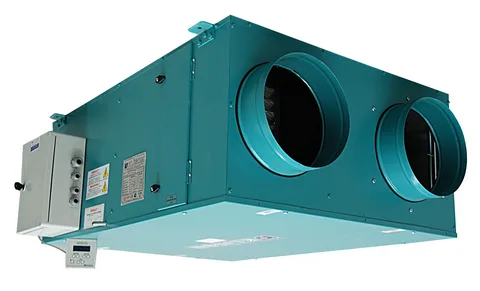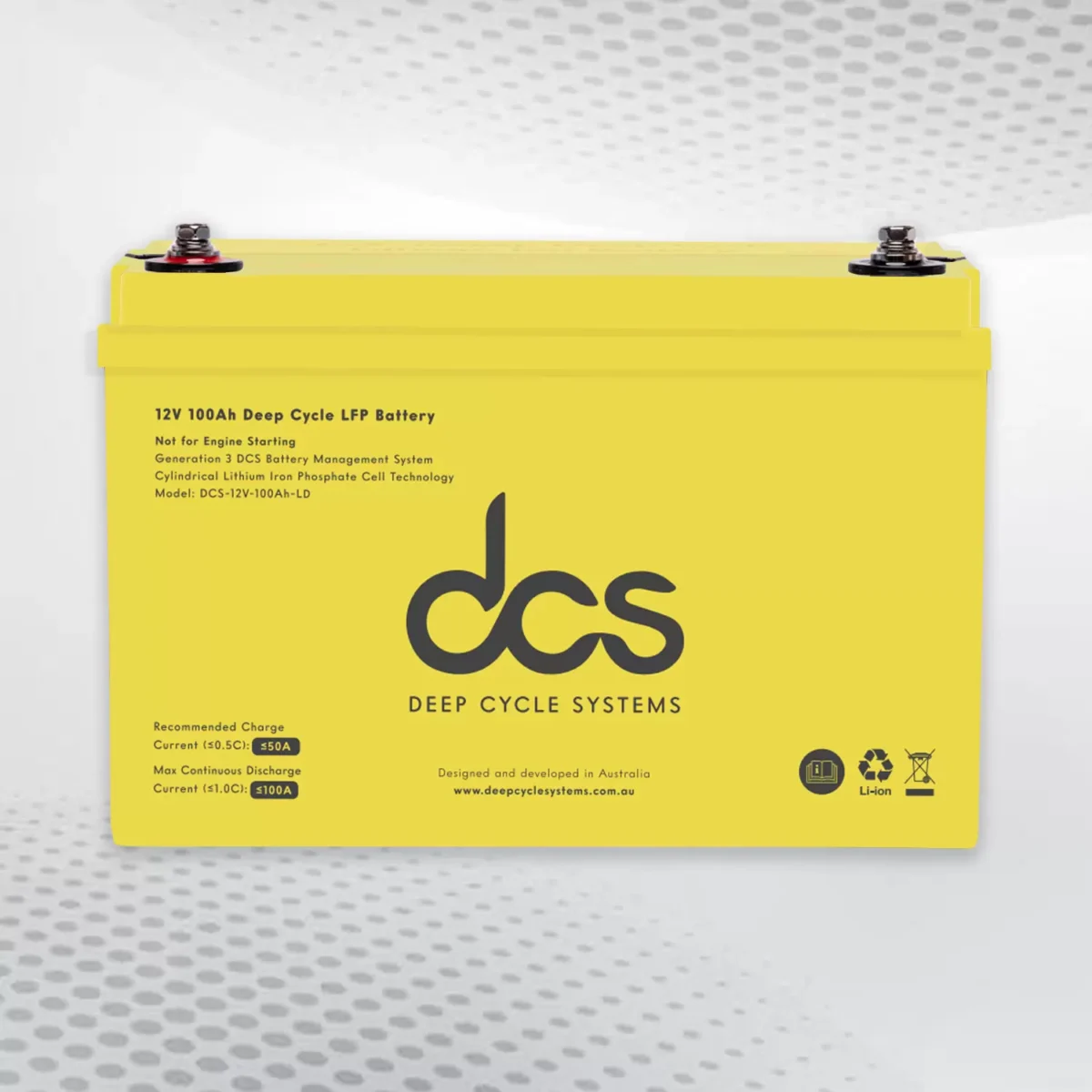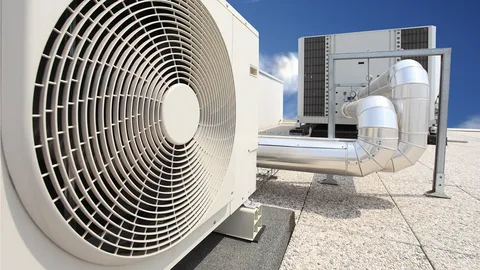Investing in a high-quality Fresh Air Heat Recovery Unit is essential for maintaining a comfortable and energy-efficient home. These systems, designed to facilitate air-heat recovery, ensure that the air circulating within your home is fresh while minimising energy loss. With a variety of options available, choosing the best unit for your home can be daunting. This blog post provides 12 key tips to help you make an informed decision when selecting the perfect heat-exchanging ventilation system for your needs.
Understanding Air-Heat Recovery
Air-heat recovery is a process that captures the heat from outgoing stale air and transfers it to incoming fresh air. This mechanism reduces the energy required to heat your home, lowering your heating costs. By reusing the heat from the air that would otherwise be expelled, you save on energy bills and reduce your carbon footprint. This system helps maintain a balanced indoor climate and ensures fresh air is continuously supplied without significant heat loss. Understanding this technology can guide you in selecting the right unit for your needs.
The Importance of an Air Heat Recovery
Stale air can become trapped in well-insulated homes, leading to poor indoor air quality. Installing a heat recovery ventilator ensures continuous fresh air while maintaining comfortable temperatures. This leads to less reliance on traditional heating systems, reducing energy bills. Additionally, these units can significantly enhance your living environment by providing a balanced indoor climate, reducing your carbon footprint, and improving overall health. By facilitating air heat recovery, these units help to keep your home environment fresh and comfortable throughout the year.
Key Features to Look for in a Heat Exchange Ventilation System
A heat-exchanging ventilation system can significantly enhance indoor air quality while maintaining energy efficiency. By transferring heat between incoming and outgoing air, these systems ensure fresh air enters your home without losing the warmth generated indoors. Here are some key features to look for when choosing a heat-exchanging ventilation system, framed as benefits:
Energy Efficiency
Heat-exchanging ventilation systems are designed to recover up to 90% of the heat from outgoing air, drastically reducing energy costs. This efficient heat recovery means your heating system doesn’t need to work as hard to maintain a comfortable indoor temperature, leading to lower utility bills and a smaller carbon footprint.
Improved Indoor Air Quality
These systems constantly circulate fresh air into your home while expelling stale air, helping to reduce indoor pollutants, allergens, and moisture. The result is a healthier indoor environment with reduced risks of respiratory issues, especially important for those with allergies or asthma.
Quiet Operation
Modern heat-exchanging ventilation systems are built with quiet fans and sound-dampening materials. This ensures that you can enjoy improved air quality without the noise typically associated with traditional ventilation systems. Thus, a peaceful home environment is maintained while still benefiting from effective ventilation.
Reduced Condensation and Mould
By balancing indoor humidity levels, Heat Exchange Ventilation System help prevent condensation buildup on windows and walls. This significantly reduces the risk of mold growth, protecting your home and your health from potential damage and allergens.
Choosing a system with these key features ensures a comfortable and healthy living space and long-term savings and sustainability.
Comparing Different Types of Residential Heat Recovery Ventilator
Energy recovery ventilators (ERVs) and heat recovery ventilators (HRVs) are essential for improving indoor air quality while maximising home energy efficiency. Both systems are designed to circulate fresh air into the house while maintaining a balanced indoor climate. Here’s a comparison of the different types and their benefits:
Enhanced Air Quality
ERVs and HRVs work to expel stale indoor air and bring in fresh, filtered air from outside. However, ERVs also retain some of the humidity from the outgoing air, making them particularly suitable for drier climates or winter when indoor air can become excessively dry.
Improved Energy Efficiency
One key benefit of these systems is their ability to reduce energy consumption. HRVs are highly efficient in transferring heat from outgoing air to incoming fresh air, thus reducing the load on heating systems. ERVs go a step further by transferring both heat and moisture, which can also reduce cooling demands in hot, humid climates.
Cost Savings over Time
Both ERVs and HRVs can significantly lower heating and cooling costs by recovering energy from the exhausted air. While they may require an initial investment, the long-term savings on utility bills can be substantial.
Customisable Options for Different Climates
HRVs are ideal for colder climates where maintaining indoor humidity is less of a concern. On the other hand, ERVs are better suited for climates with extreme temperatures and high humidity, as they help maintain balanced moisture levels inside the home.
Choosing the right Residential Heat Recovery Ventilator system for your specific needs allows you to enjoy improved air quality, energy savings, and a more comfortable living environment year-round.
Installation Considerations for Home Heat Recovery Ventilators
The placement of the unit should facilitate easy access for maintenance and optimal airflow throughout your home. Ensure existing ductwork can accommodate the new system or plan additional duct installation. Evaluate the structural capacity of your home to support the unit’s weight and dimensions. Proper sealing of ducts is crucial to prevent air leaks and maintain system efficiency. Select a location that minimises exposure to extreme temperatures, which could affect performance. Ensure adequate electrical supply and circuit protection to support the unit’s power needs. Consider installing noise-dampening materials to reduce operational noise, especially if the unit is near living areas. Always consult with a certified technician to ensure compliance with local regulations and codes.
Maintenance Tips for Your Fresh Air-Heat Recovery Unit
A Fresh Air-Heat Recovery Unit (HRV) is essential for maintaining a healthy indoor environment by exchanging stale indoor air with fresh outdoor air while conserving energy. Regular maintenance is crucial to ensure your HRV operates efficiently and effectively. Here’s why keeping up with maintenance can benefit you:
Enhanced Energy Efficiency
Regular maintenance helps keep your HRV unit running at peak efficiency. Dirty filters and blocked vents can force the system to work harder, increasing energy consumption. Cleaning or replacing filters and ensuring ducts are unobstructed can improve the unit’s performance and reduce energy bills.
Improved Indoor Air Quality
Maintenance ensures that your HRV system continues effectively removing pollutants and allergens from the air. Clean filters and properly functioning components help maintain optimal air quality, contributing to a healthier living environment.
Extended Equipment Lifespan
Routine checks and servicing can prevent minor issues from escalating into major problems. Regular maintenance helps identify and address potential issues before they cause significant damage, thereby extending the lifespan of your HRV unit.
Reduced Repair Costs
By staying on top of maintenance, you can avoid costly repairs. Addressing issues early on through regular servicing prevents breakdowns and extends the longevity of your equipment.
Consistent Performance
A well-maintained HRV unit provides consistent performance, ensuring you enjoy fresh, clean air throughout the year. Regular maintenance checks ensure all components function correctly, keeping the system running smoothly.
In summary, investing time and effort into the regular maintenance of your Fresh Air-Heat Recovery Unit enhances energy efficiency and air quality, extends the equipment’s lifespan, and reduces overall repair costs.
Energy Efficiency and Cost Savings
Energy-efficient Fresh Air-Heat Recovery units can lead to substantial savings on energy bills. By capturing and reusing heat from outgoing air, these systems significantly reduce the workload on your heating system. Opt for models with high-efficiency ratings and certifications, like Energy Star, for optimal performance. While the upfront cost might be higher, reducing energy consumption can result in a quicker return on investment.
Many units also offer advanced features such as variable speed controls and programmable settings, allowing for further energy savings. Remember to calculate potential long-term savings when evaluating the cost of a new unit.
Ensuring Optimal Air Quality with Heat Recovery Ventilators
Invest in high-quality HEPA or similar filters that effectively capture smaller particles and allergens to maintain optimal air quality with your heat recovery ventilator. Some systems include humidity control features, ensuring that moisture levels remain balanced, crucial for preventing mould and mildew.
Regularly assess indoor air quality using monitors tracking CO2, humidity, and other indicators. This proactive approach helps identify and address any potential issues promptly. Additionally, ensure that your unit is well-maintained, as clean filters and ducts are essential for maintaining a healthy indoor environment.
Smart Technology Integration in Modern Units
Modern Fresh Air-Heat Recovery units often come equipped with smart technology, allowing advanced control and monitoring. Many models feature remote control capabilities via smartphone apps, making it convenient to adjust settings from anywhere. Additionally, some units come with built-in sensors that detect air quality levels and automatically adjust ventilation rates to maintain optimal indoor conditions.
Integrating existing smart home systems is another beneficial feature, enabling seamless operation alongside other smart devices. These advanced technological features enhance user convenience and ensure the unit operates at peak efficiency, adapting to real-time conditions for improved performance and energy savings.
Performance Metrics and User Reviews
Evaluating performance metrics and user reviews is crucial when selecting a Fresh Air-Heat Recovery unit. Pay attention to key metrics such as heat recovery efficiency (HRE), airflow rate, and energy consumption. These indicators provide insight into the unit’s effectiveness and operational costs. User reviews offer valuable real-world insights into the reliability, ease of maintenance, and overall satisfaction of other homeowners.
Look for consistent positive feedback on the unit’s performance, especially in homes with similar climate conditions and size. Negative reviews can highlight potential issues, such as noise levels or difficulties in installation, helping you make a well-informed decision.
Noise Levels & Operational Quietness built-in Residential Energy Recovery Ventilator
Noise levels are a critical factor to consider when choosing a built-in Residential Energy Recovery Ventilator. Ensuring the unit operates quietly is especially important in living areas such as bedrooms and lounges. Many modern units are designed to minimise operational noise by using sound-dampening features, such as insulated casings and vibration-reducing mounts.
When reviewing specifications, look for the unit’s decibel (dB) rating, as lower dB levels indicate quieter performance. Additionally, some units offer multiple fan speed settings, allowing you to adjust the airflow to a more peaceful mode when necessary. Always check user reviews and testimonials to gain insights into the real-world noise performance of the unit in similar home environments.
Budget Considerations and Financing Options
Budget considerations and financing options are crucial factors that can significantly impact your decision when selecting a Fresh Air-Heat Recovery unit. Investing in a quality heat recovery unit improves indoor air quality and energy efficiency and offers long-term savings on heating and cooling costs. Here’s how considering your budget and exploring financing options can benefit you:
Understanding the Initial Cost
Choosing a heat recovery unit involves evaluating the initial purchase price and installation costs. While higher-end models may come with a steeper price tag, they often offer better efficiency and advanced features. Understanding the cost-benefit relationship allows you to select a unit that aligns with your budget while maximising value.
Exploring Financing Options
Many suppliers and manufacturers offer financing plans to ease the upfront financial burden. These options can include interest-free loans, flexible payment plans, or rebates. Leveraging these financing options can make the investment more manageable, allowing you to enjoy the benefits of improved air quality and energy savings without a significant initial outlay.
Long-Term Savings and Return on Investment
A well-chosen Fresh Air-Heat Recovery unit can significantly reduce energy bills by efficiently transferring heat between incoming and outgoing air streams. Over time, these savings can offset the initial investment. Additionally, many units have warranties and low maintenance costs, enhancing their financial appeal.
Evaluating Incentives and Rebates
Check for any available government incentives or utility rebates for installing energy-efficient systems. These incentives can provide substantial savings, making a high-quality heat recovery unit more affordable.
By carefully evaluating your budget and exploring financing options, you can make an informed decision that balances cost with long-term benefits, ensuring that your investment in a Fresh Air-Heat Recovery unit delivers optimal value and efficiency.
Conclusion
Choosing the best Fresh Air Heat Recovery Unit is crucial for enhancing indoor air quality and energy efficiency in your home. By understanding the technology, evaluating key features, and considering factors like installation, maintenance, and cost, you can make a well-informed decision that meets your needs. Look for units with high energy efficiency, quiet operation, and effective air quality management. Balancing these features with your budget and exploring financing options can help you invest wisely in a system that ensures a comfortable and healthy living environment while reducing energy costs.
FAQs
1. What is the difference between an HRV and an ERV?
Heat Recovery Ventilators (HRVs) and Energy Recovery Ventilators (ERVs) improve indoor air quality by exchanging stale indoor air with fresh outdoor air. HRVs primarily transfer heat, making them ideal for colder climates where indoor humidity is less concerned. On the other hand, ERVs transfer heat and moisture, making them better suited for climates with extreme temperatures and high humidity, as they help balance indoor moisture levels.
2. How often should I maintain my Fresh Air Heat Recovery Unit?
Regular maintenance is essential for optimal performance. Filters should typically be replaced every 3-6 months, depending on the manufacturer’s recommendations and indoor air quality. Fresh Air Heat Recovery Unit and ductwork should be cleaned periodically to prevent dust and debris accumulation. An annual professional inspection is also recommended to ensure all components function correctly and efficiently.
3. Are there any smart technology features available for these Air Heat Recovery units?
Yes, many modern Air Heat Recovery units come with smart technology features. These may include remote control via smartphone apps, built-in sensors for monitoring air quality, and integration with smart home systems. These features allow for convenient adjustments and ensure the unit operates efficiently, adapting to real-time indoor conditions.
4. What factors should I consider when installing a heat recovery unit?
When installing a heat recovery unit, consider factors such as the placement for easy maintenance access, compatibility with existing ductwork, and your home’s structural capacity. Ensure proper duct sealing to prevent leaks, select a location that minimises exposure to extreme temperatures, and verify the electrical supply meets the unit’s requirements. Consulting with a certified technician can ensure compliance with local regulations and codes.
5. How can I finance the purchase of a Fresh Air-Heat Recovery unit?
Financing options for Fresh Air-Heat Recovery units include:
- Checking for government or utility company rebates and grants.
- Exploring low-interest loans.
- Considering manufacturer and retailer financing plans.
Some energy-efficient home upgrades qualify for financial assistance, and spreading the cost over time makes it more manageable. Additionally, consider potential long-term savings on energy bills and increased property value when evaluating your investment.




